How ABA Therapy Improves Coping With Unstructured Free Time
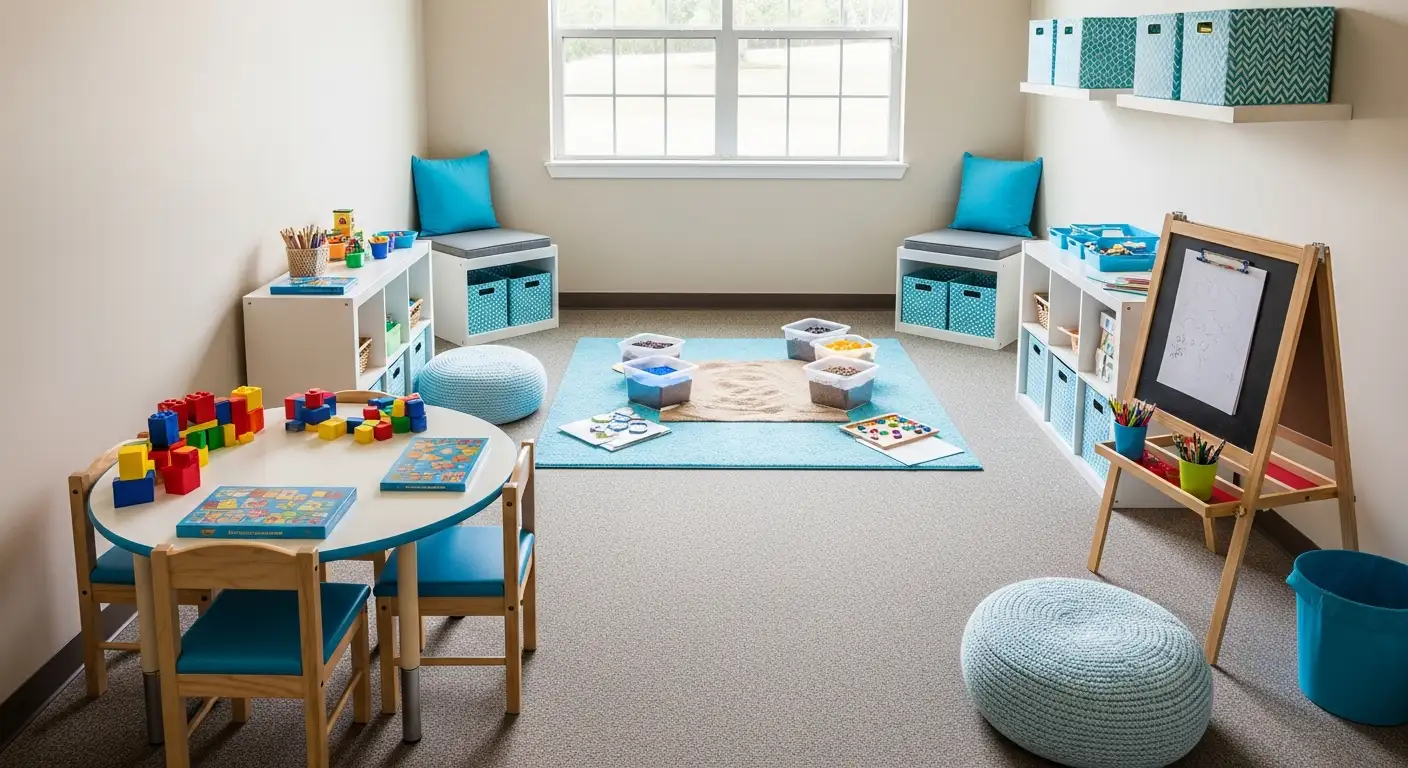
Unlocking Independence Through Structured Support
Unstructured free time often presents unique challenges for children with autism, who may struggle with unpredictability and adapting to new routines. Applied Behavior Analysis (ABA) therapy offers targeted strategies to help these children develop coping skills, manage changes, and build independence. This article explores how ABA therapy supports children with autism in navigating their unstructured moments more confidently and comfortably.
Understanding ABA Therapy: A Foundation for Behavioral Growth
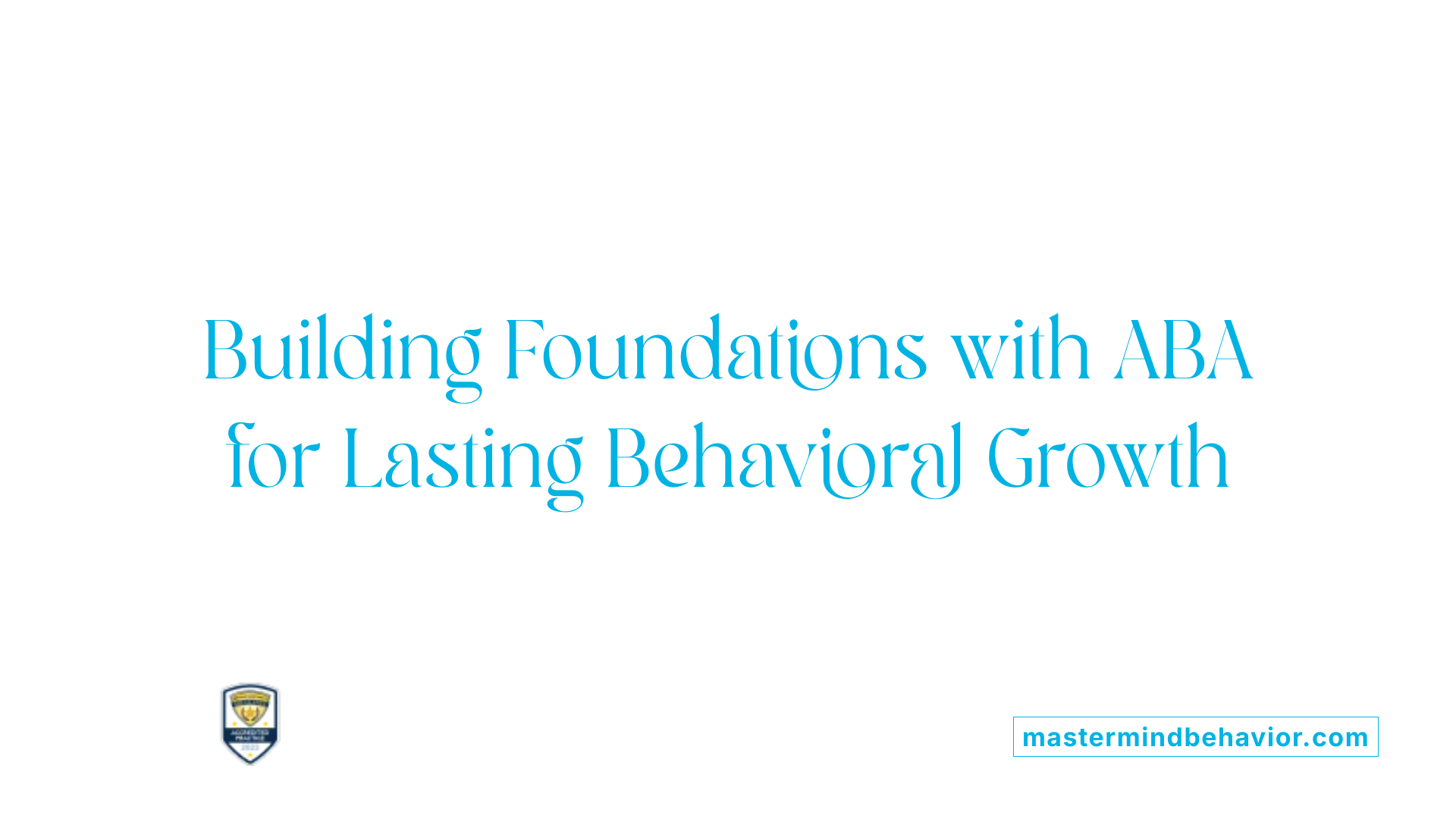
What is Applied Behavior Analysis (ABA) therapy?
ABA therapy is a scientifically supported approach focused on understanding how behaviors are influenced by the environment. It works by encouraging positive behaviors—like communication, social interaction, and learning new skills—while reducing harmful or challenging behaviors. This is often achieved through techniques such as positive reinforcement and analyzing what happens before and after a behavior occurs. ABA has been extensively researched since the 1960s and is well-established as effective, especially for children with autism and developmental disorders.
How are ABA therapy plans individualized?
ABA therapists create personalized intervention plans tailored to the unique strengths and challenges of each child. These plans are developed following initial assessments and refined through ongoing evaluations. This individualized approach ensures that each child receives support targeting their specific needs, which makes the therapy more effective and meaningful.
What role do data and assessments play in ABA therapy?
Data collection and continuous assessments are central to ABA therapy. Therapists gather information on a child's behavior and progress to understand what strategies work best. This evidence-based approach allows for adjustments in the intervention plan as needed to maximize growth and success. Regular evaluations help track improvements and identify areas needing further focus.
Through these components, ABA therapy forms a structured yet flexible foundation for helping children develop important skills and adapt to new environments, such as transitioning to school settings.
How ABA Therapy Empowers Children with Autism

Skill acquisition and behavior reduction
ABA therapy provides personalized intervention plans that emphasize teaching essential school-readiness skills. Through initial assessments and ongoing evaluations, therapists identify a child's strengths and challenges to tailor activities like following instructions, listening attentively, and actively participating in group settings. This structured approach supports the development of positive behaviors while reducing disruptive tendencies, ensuring the child is better prepared for academic and social environments.
Enhancing communication and social skills
ABA interventions focus on boosting communication by encouraging listening skills and social participation. Children learn how to engage with peers and adults appropriately, fostering improved interpersonal interactions. The therapy also incorporates coping strategies that help children manage anxiety and adapt smoothly to new routines, which is crucial during school transitions.
Promoting independence in everyday activities
To facilitate autonomy, ABA uses tools such as visual schedules and checklists to establish predictable routines, especially during busy morning periods. These strategies reduce stress and promote self-reliance, allowing children with autism to navigate daily activities confidently. Additionally, early collaboration with educational staff ensures consistent support, with regular communication helping to align strategies across environments. This comprehensive support network empowers children to succeed both at school and in the wider community.
Customizing ABA: Personalized Intervention Plans for Effective Support
Initial assessments and ongoing evaluations
ABA therapy begins with thorough initial assessments to understand each child's unique abilities and challenges. These evaluations help therapists identify specific areas that need support, such as communication skills, social interaction, or behavioral management. Throughout therapy, ongoing evaluations ensure that the intervention plan remains relevant and effective, allowing adjustments based on the child's progress.
Tailoring therapy to individual strengths and challenges
After the initial assessment, ABA therapists create personalized intervention plans that focus on the child's strengths while addressing their individual challenges. This approach ensures that therapy targets school-readiness skills like following instructions, listening, and participating in group activities, all crucial for a smooth transition into a school environment. Personalized plans also include teaching coping strategies to manage changes and reduce anxiety, which are common during school transitions.
Importance of collaboration with educational staff
Successful ABA interventions rely heavily on early and consistent collaboration with educational staff. Therapists work closely with teachers and school personnel to share insights about the child's needs and effective strategies. This cooperative approach helps integrate ABA techniques within the classroom setting, creating consistency and enhancing the child's ability to adapt. Regular communication ensures that the child receives comprehensive support both at therapy sessions and in their school environment.
Techniques That Make ABA Therapy Effective in Managing Unstructured Time
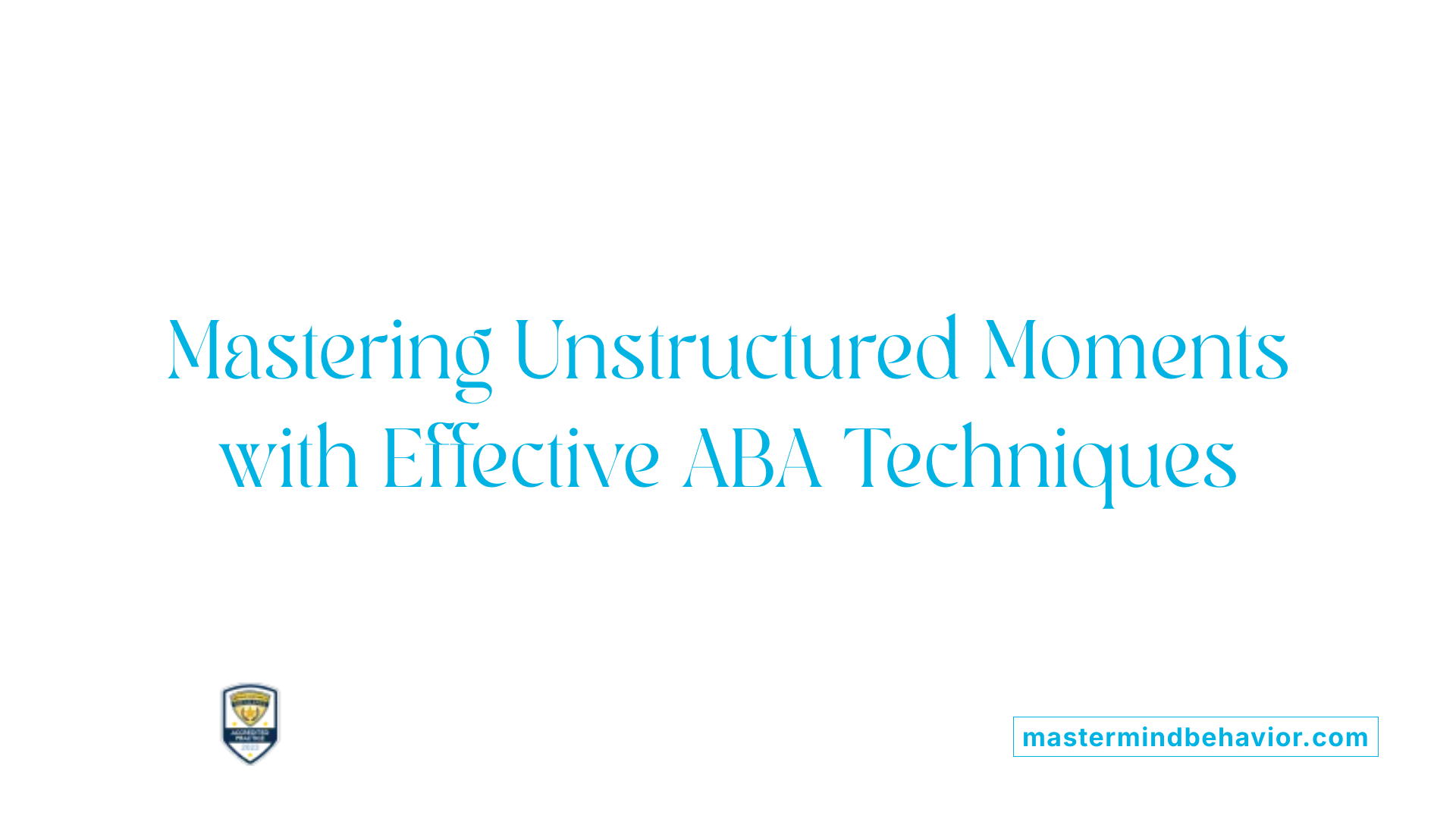
What techniques are used in ABA therapy?
ABA therapy employs several well-researched techniques designed to promote positive behavior and skill development. A cornerstone method is positive reinforcement, where children receive rewards or praise when demonstrating desirable behaviors. This encourages those behaviors to be repeated consistently.
Prompting and fading are also widely used; therapists provide initial guidance or cues to help a child perform a task, then gradually reduce support to foster independence. This is particularly useful in encouraging participation during unstructured periods like recess or free play.
Behavior chaining is another important technique. It involves teaching a sequence of behaviors by linking smaller, manageable steps until the complete skill is mastered. For example, a child might learn each step of getting ready in the morning through chaining, which helps increase confidence and promotes routine.
Modeling is used to demonstrate desired behaviors, either live or through video examples, providing children with clear, concrete examples to imitate. This helps with learning social skills and appropriate interactions during less structured times.
How do visual schedules and checklists support children?
Visual schedules and checklists are invaluable tools in ABA therapy, especially for managing unstructured time. These aids establish predictable routines by visually breaking down tasks and transitions, such as morning preparations or moving from classroom activities to recess. Knowing what to expect reduces anxiety and increases independence.
Incorporating these visual supports helps children anticipate the sequence of events, decreasing uncertainty during unstructured periods. This predictability supports smoother transitions and reduces potential behavioral challenges that can arise when children feel overwhelmed or unsure.
How do behavior chaining and modeling techniques help?
Behavior chaining allows children to build complex routines by mastering individual steps, which bolsters their ability to independently navigate unstructured time, like getting their materials ready or joining group activities.
Meanwhile, modeling provides a clear illustration of appropriate behaviors and social cues. Therapists or peers demonstrate desired actions, which children then imitate and practice. Video modeling extends this approach, offering repetitive, controlled examples that reinforce learning.
Together, these techniques systematically teach children essential coping, social, and organizational skills needed to thrive during unstructured parts of the school day.
Supporting Transitions and Reducing Anxiety Through ABA Strategies
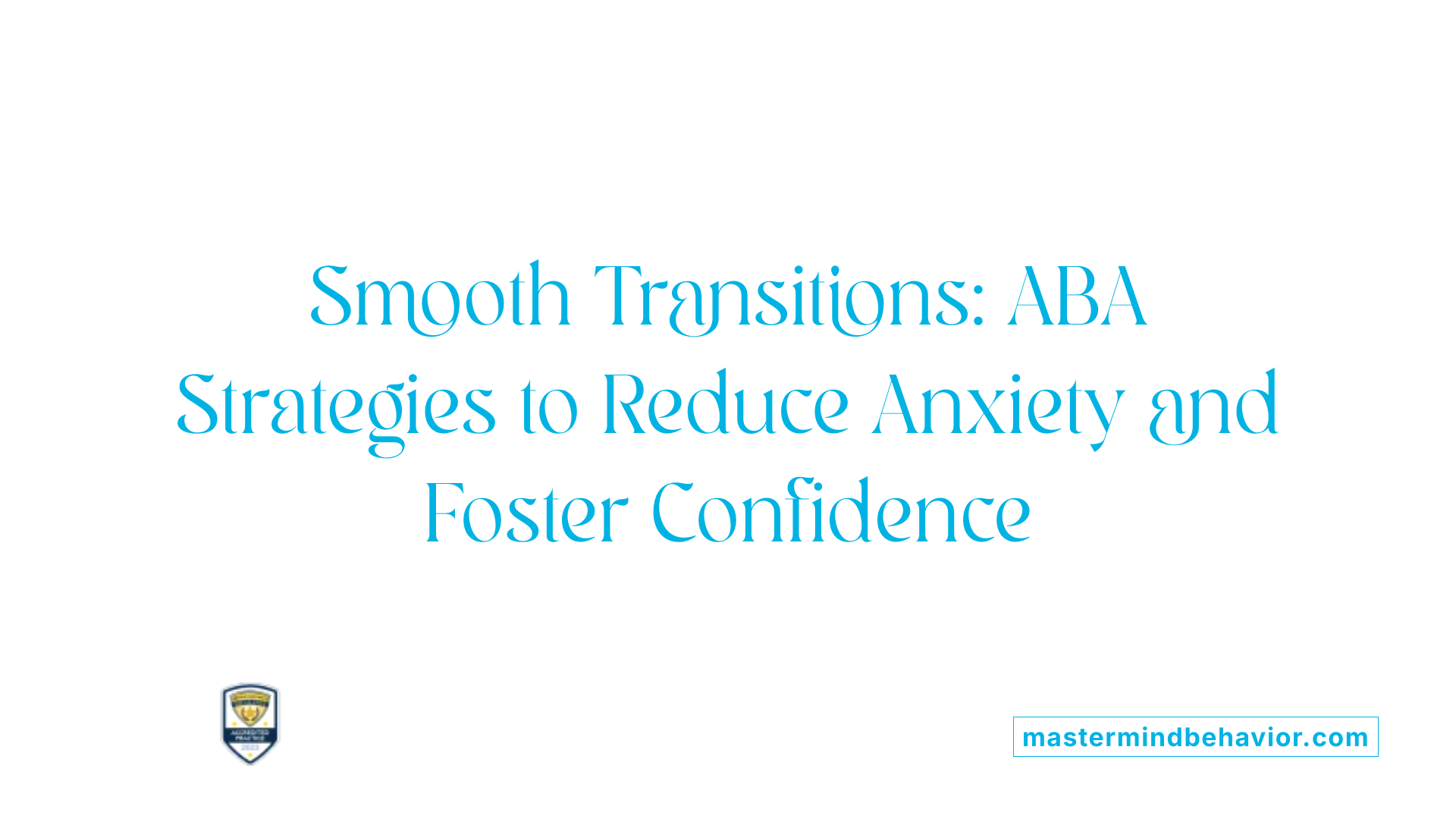
How does ABA therapy help children cope with change and anxiety during school transitions?
ABA therapy equips children with autism with practical coping strategies that aid in managing anxiety and adapting to new routines. Therapists work closely with each child to teach skills that ease the stress triggered by changes, such as learning calming techniques or gradually introducing new activities to build comfort and confidence.
What role do predictable routines play in ABA therapy?
Establishing predictable routines is central to ABA interventions, as it reduces uncertainty and anxiety. Visual schedules and checklists are commonly used tools that help children anticipate what will happen throughout their day. These visual aids promote independence by enabling children to follow morning routines consistently, making the start of their school day smoother and less stressful.
Why is early collaboration with educational staff important in ABA therapy?
Early and ongoing collaboration with teachers and school staff is crucial to maximize ABA therapy outcomes. By sharing information about the child's needs and effective strategies, caregivers and educators can create a consistent support system. This coordinated approach ensures that the child receives a seamless transition into school life, with all adults reinforcing the same coping mechanisms and routines.
Measuring Success: Tracking Progress in ABA Therapy

How is the effectiveness of ABA therapy measured?
ABA therapy's effectiveness is assessed through systematic data collection focused on targeted behaviors. Therapists measure specific observable actions such as following instructions, participating in group activities, or managing anxiety during transitions. These behaviors are quantified using counts, durations, or frequency measures.
Regularly recorded data is graphically presented using trend lines or charts, providing a clear visual narrative of progress over time. This continuous tracking helps therapists see when goals are met or when modifications are needed.
What assessment tools are used?
Standardized tools like the Vineland Adaptive Behavior Scales, Third Edition (Vineland-3), and Verbal Behavior Milestones Assessment and Placement Program (VB-MAPP) are commonly employed. These instruments evaluate communication, socialization, and adaptive behavior across various domains. On top of standardized tests, therapists also utilize customized tools such as the Patient Outcome Planning Calculator (POP-C), tailored to the child's unique strengths and challenges.
How is therapy adjusted based on data?
Data from assessments and ongoing tracking feed into dynamic, personalized intervention plans. This ensures therapy adapts to the child’s evolving needs—whether that means increasing focus on coping strategies, refining morning routine supports like visual schedules, or enhancing group participation skills. By continuously reviewing progress, therapists collaborate with educational staff to optimize treatment outcomes and support smooth school transitions.
Building Confidence and Independence Through ABA
ABA therapy plays a crucial role in helping children with autism effectively manage unstructured free time by providing structured, personalized support and coping strategies. Through targeted skill-building, consistent use of visual aids, and ongoing evaluation, ABA enables children to handle changes, reduce anxiety, and increase independence during times that might otherwise be overwhelming. Early collaboration with educational teams and careful measurement of progress further ensure that these interventions continue to meet each child's evolving needs. Ultimately, ABA therapy fosters greater confidence and smoother transitions, paving the way for a more fulfilling and autonomous life.
References
- Children With Autism Back to School Tips
- Applied Behavior Analysis (ABA)
- Applied Behavior Analysis (ABA)
- Introduction to Applied Behavior Analysis: ABA 101
- Applied Behavior Analysis (ABA)
- The Top 10 Reasons Children With Autism Deserve ABA
- Applied Behavior Analysis (ABA)
- 6 Benefits of ABA Therapy for Children with Autism
Recent articles

How ABA Therapy Reduces Avoidance Of Group Presentations
Empowering Communication and Social Engagement Through ABA Therapy
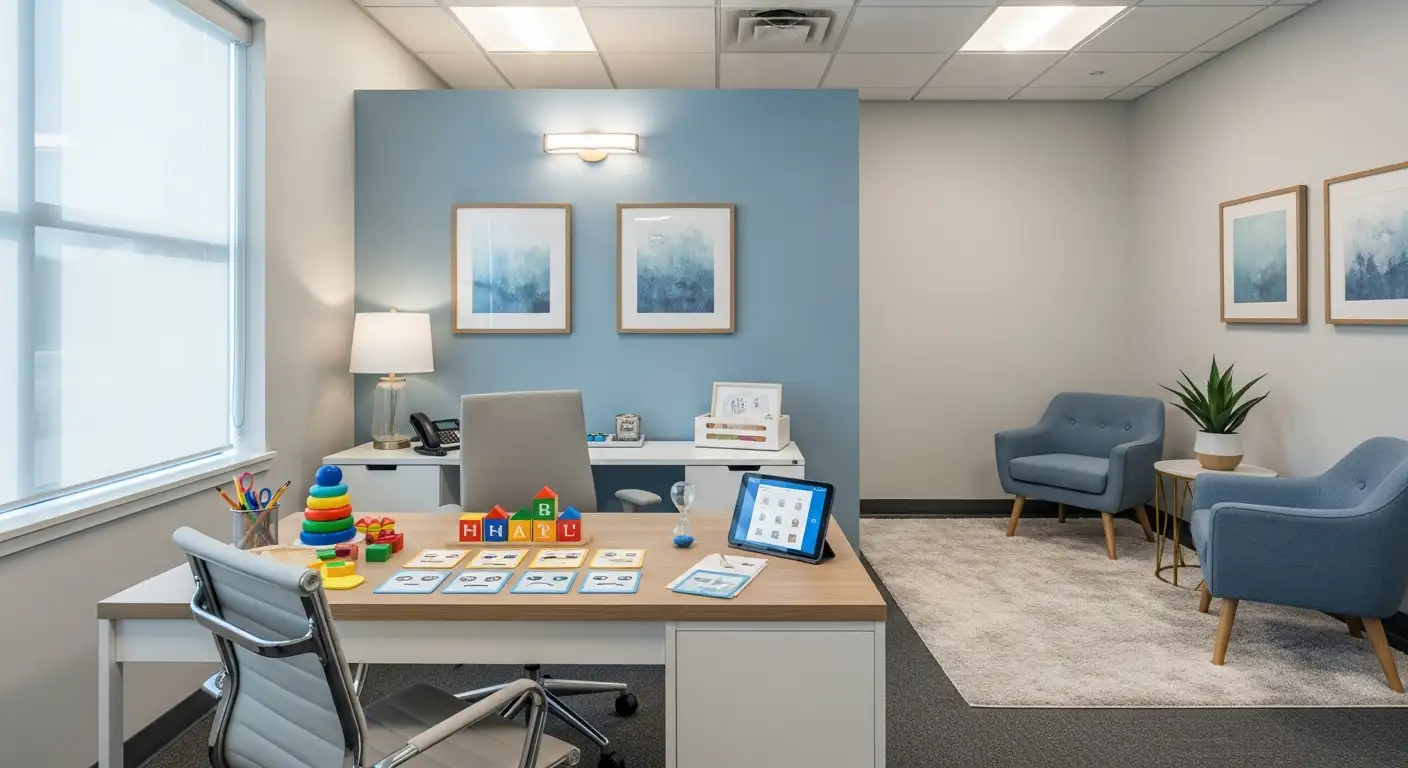
Addressing Sleep Challenges Through Behavior-Based Strategies In ABA
Harnessing ABA to Improve Sleep in Children with Autism
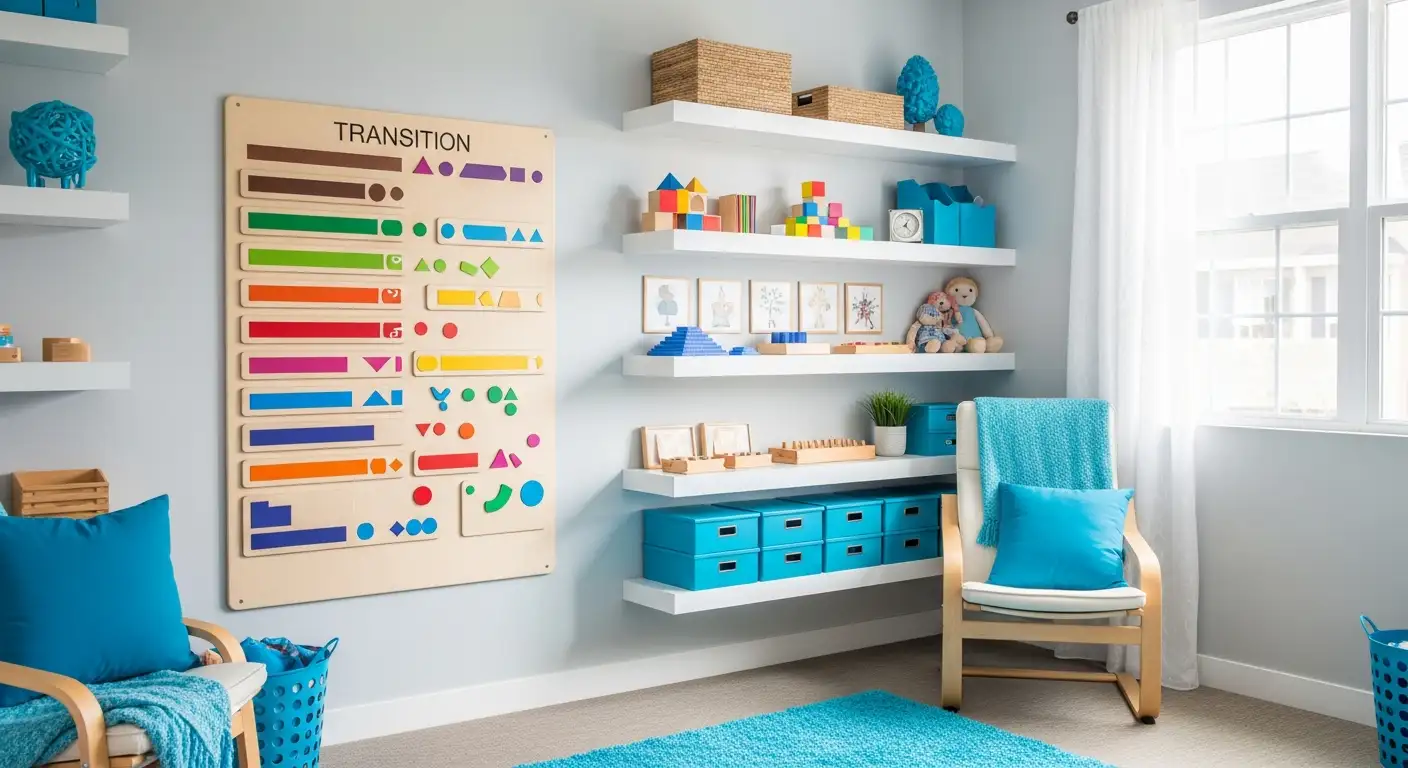
How ABA Therapy Improves Transitioning Between Activities
Mastering Day-to-Day Changes: The Role of ABA Therapy in Smooth Transitions for Children with Autism

How To Support Emotional Regulation Using ABA Tools
Mastering Emotional Regulation: ABA Strategies for Autism

ABA Therapy Strategies To Reduce Tantrums In Public Settings
Effective ABA Techniques to Manage Public Tantrums in Children with Autism

ABA Therapy Strategies For Supporting Academic Perseverance
Unlocking Potential: How ABA Therapy Fuels Academic Perseverance in Children with Autism



